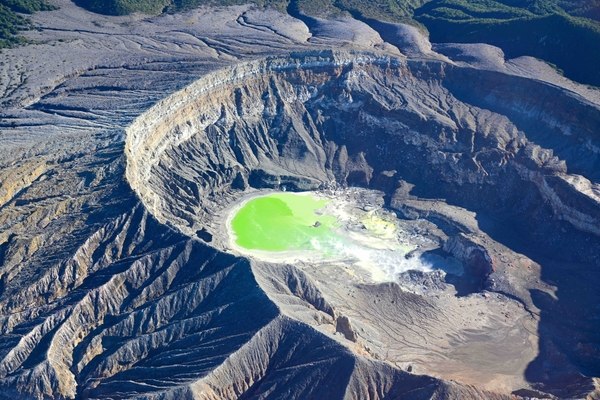The lagoon of the Poás volcano could dry out by the end of this month. Many factors come into play, some of which are evaporation and depletion of rains. The water level dropped by several meters and could be gone in a few days.
The water is constantly monitored by scientists to verify the content of chlorine, sulfur, and more, to see what internal changes may be occuring. These lakes change temperature, acidity and height.
There is currently a lot of mud on the banks so they can’t get to the edge to take water samples. They had to throw a bottle from five meters away. They found that the water temperature has fallen, meaning there is less heat input coming from internal activity of the crater.
Another change is that the flow of gas is extremely low. The level of sulfur dioxide is 250 tons per day, just a quarter of the 1,000 tons it emitted a year ago. Once the water is gone, the gas may come out easier and might, therefore, increase again.

